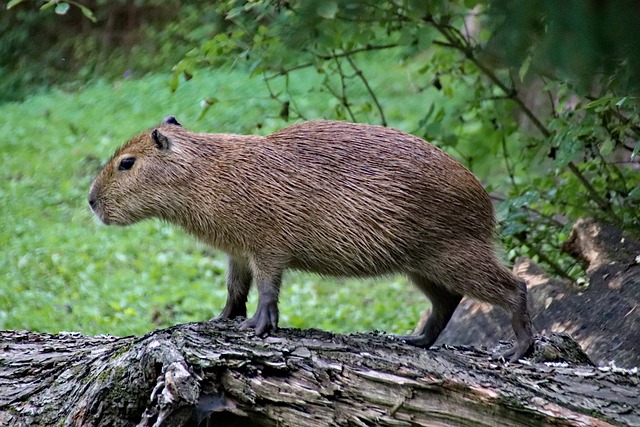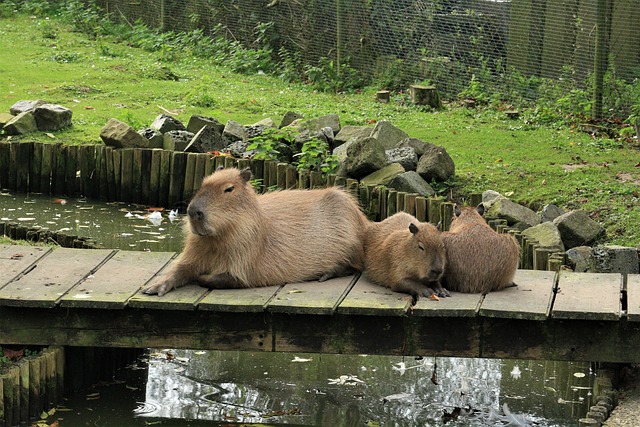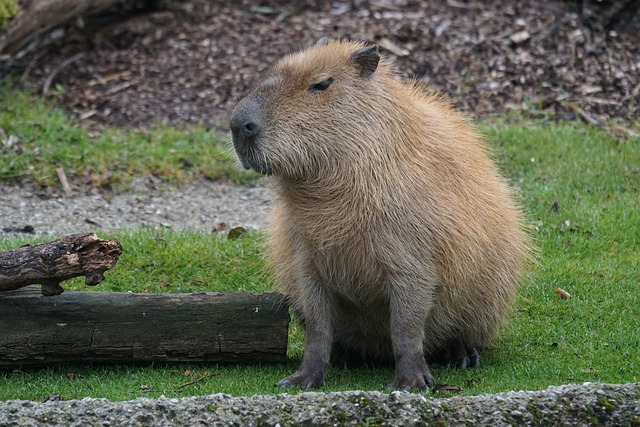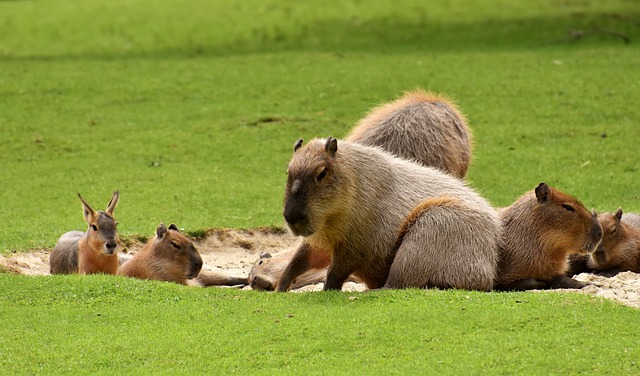Capybara, the world’s largest rodent, is a delicacy in many South American countries. However, in the United States, the consumption of capybara meat is not common and is subject to various regulations.
In this article, we will explore the legal and cultural aspects of consuming capybara in the US, as well as the potential considerations for those curious about trying this exotic meat.
Legality of Eating Capybara in the US
In the United States, the practice of eating capybara is rare and thus not explicitly regulated by federal law. However, individual states may have their laws and restrictions concerning the consumption of non-traditional meats.
Federal Guidelines:
The USDA does not classify capybara as common livestock, which means they are not subject to the same inspection standards as traditional meat sources like cattle or poultry. Therefore, should capybara meat be made available, it would likely fall under game or exotic meat regulations.
State Regulations:
- Importation: Some states may require special permits to import capybara for consumption.
- Hunting Regulations: In states where capybara might be present, wildlife agencies regulate the hunting of these animals.
- Endangered Species Act: Capybaras are not listed as endangered, so federal protection does not apply; state protections may vary.
Health Regulations:
Eating capybara meat must adhere to the same food safety standards as any other meat to prevent foodborne illness, even though there are no specific guidelines for capybara.
Cultural and Ethical Considerations:
While legal aspects are permissible under certain conditions, cultural and ethical considerations may influence capybara consumption in the US. Public opinion often discourages the eating of exotic pets or animals not traditionally viewed as livestock.
Before consuming capybara meat in the United States, individuals should check specific state laws and obtain the meat from reputable sources that comply with general health and safety regulations.
Can You Eat Capybara in the US
Capybaras are large rodents native to South America, often celebrated for their gentle and social nature. In the United States, the exotic appeal of capybaras extends beyond pet ownership to culinary curiosity.
While not a traditional food source in the U.S., discussions around the edibility of unique animal species occasionally pop up, and the capybara is no exception.
Federal and state regulations dictate the legality of consuming different animal species, and these laws must be considered by those interested in the culinary exploration of capybara meat.
In the South American countries where capybara are indigenous, they are indeed consumed as food, particularly during specific religious periods like Lent in some cultures.
However, in the United States, capybaras are not farmed for meat, and finding them on the menu is a rarity. The capybara’s legal status varies by state, with some classifying it as a wildlife species, potentially implying restrictions on hunting and consumption.
Moreover, import laws complicate the acquisition of capybara meat, primarily because it lies outside common food regulation channels in the U.S.
The market for capybara as a food source within the United States is, as a result, largely nonexistent. Those curious about tasting capybara meat must navigate an intricate web of legal and ethical considerations.
The situation raises various questions on the appropriateness and impact of consuming such an animal in a country where it is not indigenous or widely recognized as livestock.
Furthermore, the nuances of conservation status, humane treatment, and potential ecosystem impact are important factors to consider.
Capybara as a Food Source
Capybara meat is a lesser-known food source, particularly in South America where they are more abundant. In the United States, capybara are not a common food item, but they are occasionally eaten.
Legality and Availability:
In the U.S., capybaras are not classified as typical livestock, and therefore their meat is not widely available. The regulations for consuming capybara meat can vary by state as some states might treat them as exotic pets while others may consider them wildlife.
Nutritional Profile:
Capybara meat is known for being lean and high in protein.
| Nutrients | Content in Capybara Meat (approx.) |
|---|---|
| Protein | High |
| Fat | Low to moderate |
| Cholesterol | Comparable to other meats |
Culinary Practices:
Wherever it is consumed, capybara meat is often prepared in similar ways to other game meats; it can be grilled, roasted or prepared in stews. They are traditionally eaten during certain religious periods in some South American cultures.
Considerations:
Those considering capybara as a food source should be aware of the legal and ethical implications, including the animal’s status as a wild species and pertinent wildlife conservation laws. Additionally, one should ensure that any meat consumed is sourced following the relevant health and safety regulations.
Regulations Governing Capybara Meat
In the United States, regulations concerning the consumption of capybara meat are managed by various federal and state agencies. The U.S. Fish and Wildlife Service (USFWS) is the primary agency responsible for the enforcement of federal wildlife laws.
Capybaras are classified as exotic animals, and they fall under the regulatory umbrella of the Lacey Act, which governs the interstate transport of wildlife species. To legally consume capybara meat, one must ensure the animal was legally imported and complies with local and state laws.
Each state may enact its own specific regulations regarding exotic meats. Future consumers must verify with their state’s Department of Fish and Wildlife or equivalent agency to confirm legalities of capybara meat acquisition and consumption.
Importation and Sale:
- Import permits required from USFWS
- Compliance with the Convention on International Trade in Endangered Species of Wild Fauna and Flora (CITES)
- Meat must be inspected and passed by the U.S. Department of Agriculture (USDA)
Ownership and Hunting:
- Some states allow ownership with a special license
- Hunting may be regulated or prohibited
- Check with the state’s wildlife agency for specific hunting regulations
Consumers are also advised to ensure the source of the meat has followed ethical harvesting practices. Environmental concerns and the sustainability of consumption are key factors that should be considered before one decides to consume capybara meat.
Health and Safety Considerations
When consuming capybara in the United States, one must take certain health and safety measures to ensure the meat is fit for consumption. Since capybaras are not common in the U.S. diet, they are not regulated by the USDA.
Regulatory Status
- USDA: Capybara meat is not USDA regulated.
- FDA: Similar exotic meats fall under FDA oversight.
Preparation
Capybara meat must be properly cooked to avoid potential pathogens. They should reach an internal temperature of 160°F.
- Slaughter: Performed by licensed individuals.
- Inspection: Seek local health department guidance.
- Cooking: Minimum temperature of 160°F.
Disease Control
They can carry parasites and diseases transmissible to humans, such as:
- Ticks: Can carry Lyme disease.
- Fleas: May transmit various infections.
Nutritional Content
Capybara meat is high in protein but also rich in fat. It should be consumed in moderation as part of a balanced diet.
Environmental Considerations
Sourcing capybara meat in the U.S. can have environmental impacts. It is crucial to verify that the meat comes from sustainable sources.
Legality
Before consuming capybara, it is crucial to check state and federal regulations as legal constraints may exist.
Ethical and Environmental Concerns
Ethical considerations regarding the consumption of capybara touch on animal welfare and cultural respect. Capybaras are sentient beings capable of experiencing pain and distress.
They are also a fundamental part of certain South American cultural traditions, and consuming them outside of these contexts may be seen as disrespectful or culturally insensitive.
From an environmental standpoint, sustainability is a critical issue. Capybaras are not farmed on a large scale; thus, hunting pressure could lead to population declines if not regulated properly. Their role in their natural habitat is significant, as they help control vegetation and serve as prey for native predators.
- Habitat Impact: Large-scale consumption of capybara could incentivize habitat destruction to create room for potential farming operations.
- Biodiversity: Capybaras are a keystone species. A keystone species is one that has a disproportionately large effect on its natural environment relative to its abundance, meaning changes in the species’ population can significantly affect the structure of an ecosystem.
In the United States, the legality of consuming capybara hinges upon local regulations concerning exotic pets and wildlife. Importing capybaras for consumption could raise bioethical questions regarding invasive species and diseases potentially impacting local ecosystems and species.
Regulation and Conservation:
- U.S. authorities regulate exotic meat through permits and health inspections to minimize risks to local wildlife and ecosystems.
- Consuming animals with a significant ecological role, like the capybara, can stir debate among conservationists and ecologists.
Culinary Practices Involving Capybara
Capybara, the largest rodent in the world, originating from South America, occasionally finds its way into culinary traditions, primarily within regions where it is indigenous.
In the United States, consumption of capybara is not widespread due to both cultural unfamiliarity and limited availability. However, this does not preclude its presence on the menu in cosmopolitan or exotic meat-serving establishments.
Legality: Importation and consumption of capybara meat in the U.S. are subject to federal and state regulations. Interested parties should consult the U.S. Fish and Wildlife Service for importation compliance alongside state wildlife agencies.
- Dishes: Traditional South American recipes utilizing capybara include:
- Capybara Stew: A hearty combination of capybara meat slow-cooked with regional vegetables, herbs, and spices.
- Fried Capybara: Seasoned chunks of meat deep-fried until golden.
Cooking Methodologies: Given its aquatic habits, capybara meat is often described as tasting similar to pork but with a distinctly gamey flavor. Chefs recommend:
- Low and slow cooking to tenderize the meat.
- Marinating to enhance flavor and moisture.
Availability: The meat might be sourced from specialized game or exotic meat providers. Some restaurants may feature capybara during special cultural events or as a novelty offering.
In summary, culinary practices involving capybara in the U.S. are rare, largely leaning on South American traditions with local adaptations. Its presentation is often reliant on the expertise of chefs familiar with its preparation and sourced by niche markets catering to an adventurous clientele.
Alternatives to Capybara Meat
For those considering alternatives to capybara meat due to regulations, ethical concerns, or availability, a range of options exists. Rabbit and guinea pig are similar in size to capybaras and offer comparable textures and flavors. They’re often used in traditional dishes where capybara might be served, especially in South American cuisines.
| Farm-Raised Meats | Characteristics |
|---|---|
| Chicken | Lean, versatile meat; widely available. |
| Turkey | Lean, slightly richer flavor; commonly found in grocery stores. |
| Pork | More flavorful, a bit fattier; a staple protein in many diets. |
For those preferring plant-based substitutes, products such as soy-based or mushroom-based proteins can mimic the texture of meat well. These substitutes are environmentally friendly and can be seasoned to suit a variety of recipes that would traditionally require capybara meat.
Legumes, like lentils and beans, are also nutritious alternatives. When combined with grains, they provide a complete protein, ideal for those seeking a balanced diet without animal products. They can be used in many dishes as a ground meat substitute, offering a satisfying, hearty component to meals.
In conclusion, a wide range of alternatives exists that cater to various dietary preferences and needs, allowing consumers to explore diverse culinary options beyond capybara meat.




